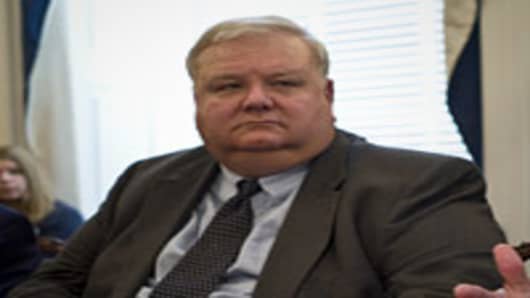The U.S. faces a long-term structural problem that simply printing vast amounts of money is not going to fix, Lawrence Lindsey, CEO of the Lindsey Group, told CNBC’s “Squawk Box” on Friday.
“You can’t have a country that runs 10 percent of GDP budget deficits and has the central bank buy two-thirds of those bonds every year for a long period of time,” Lindsey, a former Federal Reserve governor and economic advisor in the George W. Bush administration, said.
“We need to learn from the last four years and figure out what goes next. We know this is not going to go on forever,” he said.
(Read More:Bernanke at Jackson Hole: No More Easing, For Now.)
What comes next, Lindsey suggested is going to be do fiscal consolidation while interest rates are low enough to cushion the blow. That’s the economy policy the U.K. has been following, he noted.
According to Lindsey, we need to begin that process here. “We have maintained the low interest rates. We have not begun the fiscal consolidation process, and so I think that's really what the next step is going to be. And in the back of everyone's mind, I think everyone knows that's the only path that makes a lot of sense going forward.”
Lindsey said this fiscal consolidation includes both raising the tax share of gross domestic product(learn more)while also cutting the share of GDP that goes to the government. The share of GDP going to the government is at a record, except for World War II. Historically it's 20 percent, we're now at 24 percent, Lindsey noted.
Raising taxes only on the rich also isn’t a solution, Lindsey said. “We’re going to be going over a so-called fiscal cliff of $630 billion in January,” he noted. “The so-called tax cuts for the rich are $75 billion of that — 12 percent.”
Raising taxes on the rich “is not, cannot possibly, be the sole solution to the problem,” Lindsey said.



